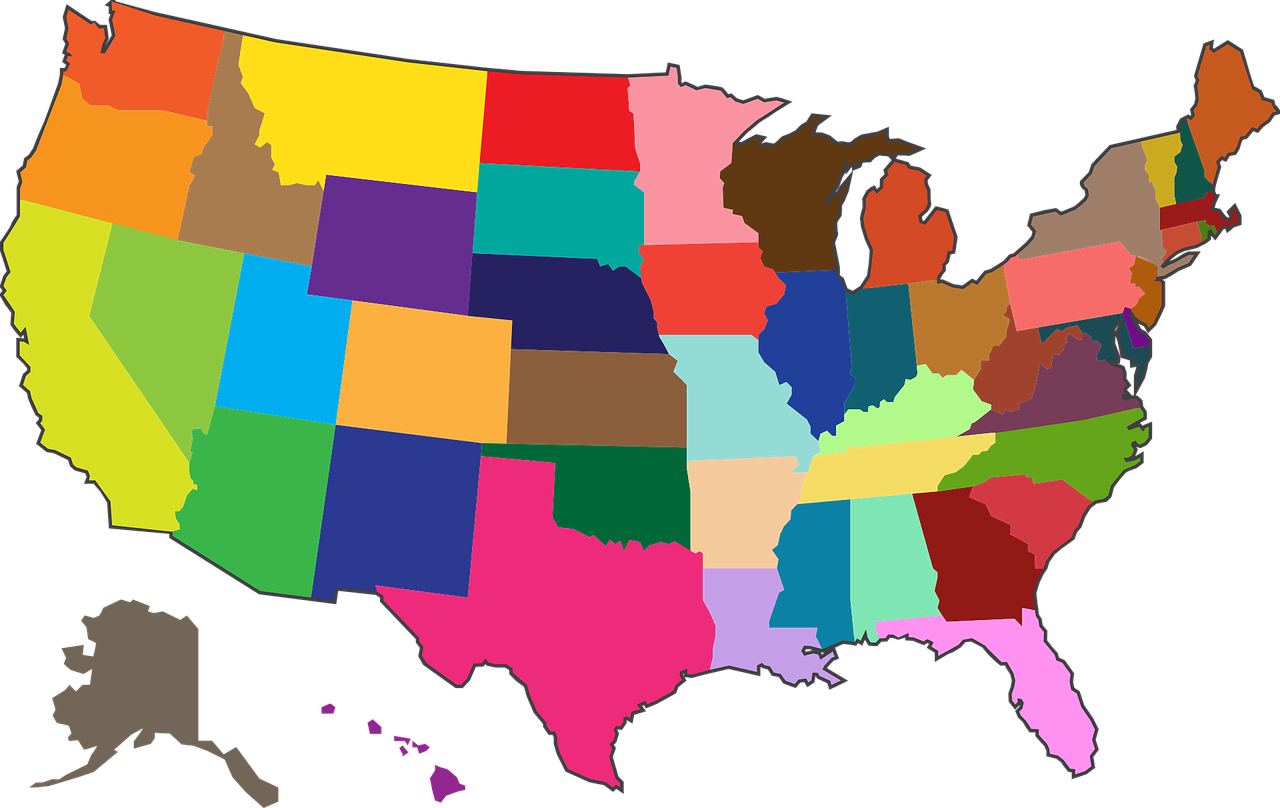A Veteran Nurse's Insight: Unveiling the Realities of the National Family Caregiver Support Program
Explore the critical role of caregivers, highlighting how NFCSP supports them through training, financial aid, and emotional support. It identifies gaps and suggests enhancements for better caregiver assistance.
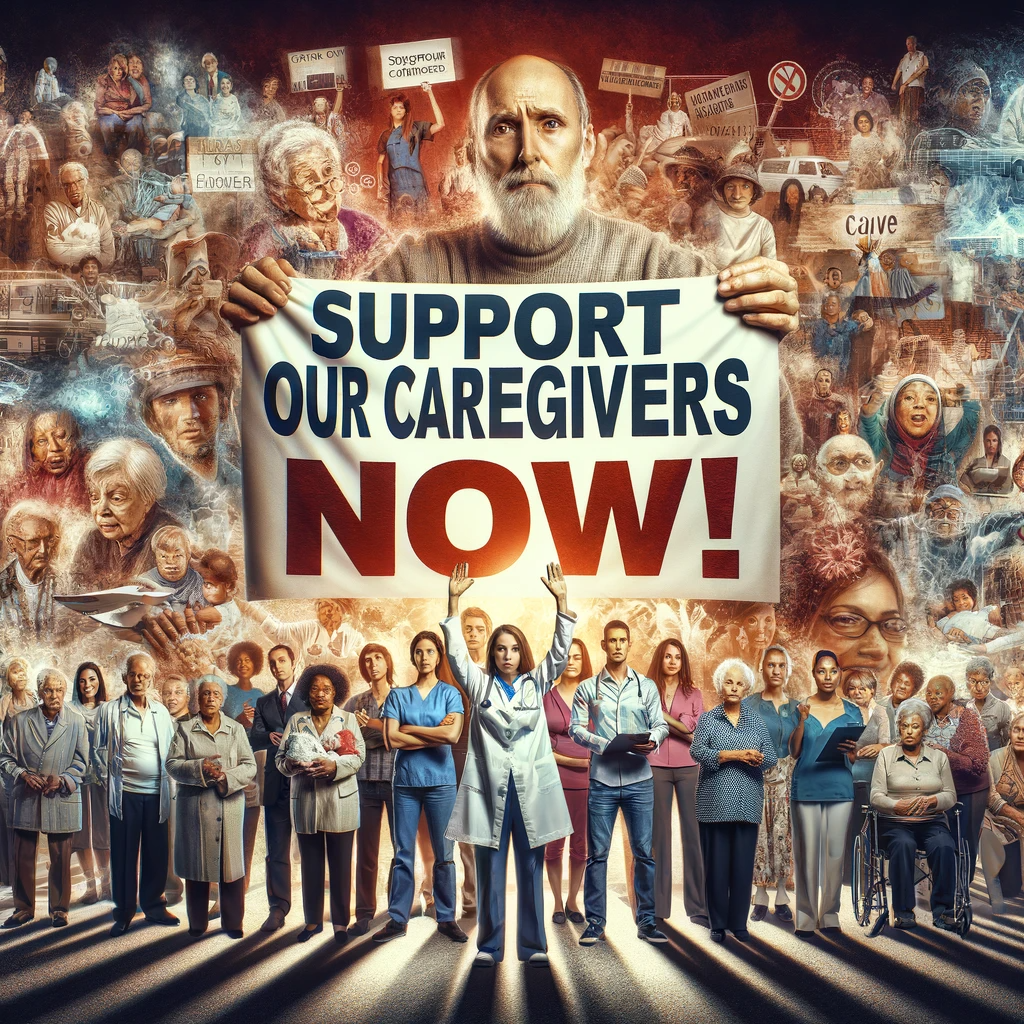
I would like to address the National Family Caregiver Support Program and its shortfalls. I have worked with the aging population for over 50 years as an RN. I have watched in frustration as my profession has changed dramatically. I was 18 when I went into nursing. I became an RN at a good time in health care. In those days, nurses had the opportunity to assess their patients, and educate them. That was a time when the poor were given the best possible care. Teaching hospitals provided the same level of care to those on Medicaid, as they did those with private insurance. In those days, the private insurance companies helped the hospitals make enough to provide that care and cover the cost for those on Medicaid.
I was living in Minnesota, in the 1970's when I started working for the very first review organization for private insurers. It was then, I learned how much waste there was in the health care system. I remember calling hospitals in New York City and finding the hospitals were admitting patients 2 and 3 days before surgery! They wanted to make sure that the patient had a bed available post op.
At the time, I realized that there was lots of unnecessary admissions and utilization of our health care dollars. I saw the growth of many companies that provided a solution to companies to lower their health care costs and utilization. We have now taken the pendulum the other way.
It was at that time, that I learned about the Medicare DRG and Length of Stay (LOS ) data. I have provided more information on the DRG system in the frequently asked questions at the bottom of the page. These cost containment companies based all their decisions on how long a patient can stay in the hospital on this data. The problem with this data is, hospitals were incentivised to send the elderly and frail home before they should have been. This was verified, because there were so many readmissions to the hospital within a 30 day period.

Medicare also gave financial incentives to the hospitals. The hospitals were given a pot of money for a diagnosis. If they sent the patient out early, they made money. If they kept a patient longer, their profits decreased. Hospitals started to give financial incentives to the discharge planners if they got a patient out early. Over the years, Medicare did not raise their reimbursement rates, it did not reevaluate and lengthen the hospital stay and extend them to a more realistic length for this frail and elderly population.
Instead, they changed the rules. Hospitals would be penalized if a Medicare patient was readmitted within 30 days of a hospital discharge. This resulted in hospitals working around this new rule by creating "observation units" that provided care to these patients under a different billing code. This allowed the hospitals to get paid for the care provided.
The unintended consequence of this, was these frail and elderly patients did not meet the Medicare guidelines of a three day stay in the hospital to qualify for much needed skilled care. The result was, when the Medicare patient needed ongoing care and rehabilitation, they no longer qualified for coverage for the much needed skilled care. Families were left to privately pay for this very expensive care or take their loved one home with limited support for home care.
Skilled care is when you are admitted to a nursing home for much needed therapy and care to return home. This was supposed to be a cost effective measure, instead of putting a patient in acute rehabilitation. Acute rehabilitation provides a rigorous daily schedule that the frail elderly patients were unable to follow. Skilled care was to provide a less challenging program and help the patients recover and go home.
Of course, at the time, the unintended consequence was the coverage for skilled care was for 90 days if you had a supplement to cover the cost. Patients with supplemental insurance stayed 90 days and then were discharged.
Of course, with the growth of Medicare Advantage, we are seeing more and more denials and limited care. The government has decided to make the health care consumer responsible for paying for the treatments, services and medications recommended by the patient's doctor. In the FAQ section of this post, I explain how Americans can't afford to use their health care insurance. This is done by design. The copays, deductibles and yearly out of pocket deductibles it to discourage use of benefits. And its working. You can learn more about this in the FAQ section of this post.
Another disturbing unintended consequence of this move to cut costs, patients that needed lots of intensive care needs were moved to a skilled facilities when the Length of stay ( LOS) was up under the Medicare guidelines. I cannot tell you how dangerous this was. I worked as an agency nurse and would go to different nursing homes in the area. Because I was an RN, I was usually placed in the skilled unit. The level of care of some of these patients was well beyond the expertise of the staff.
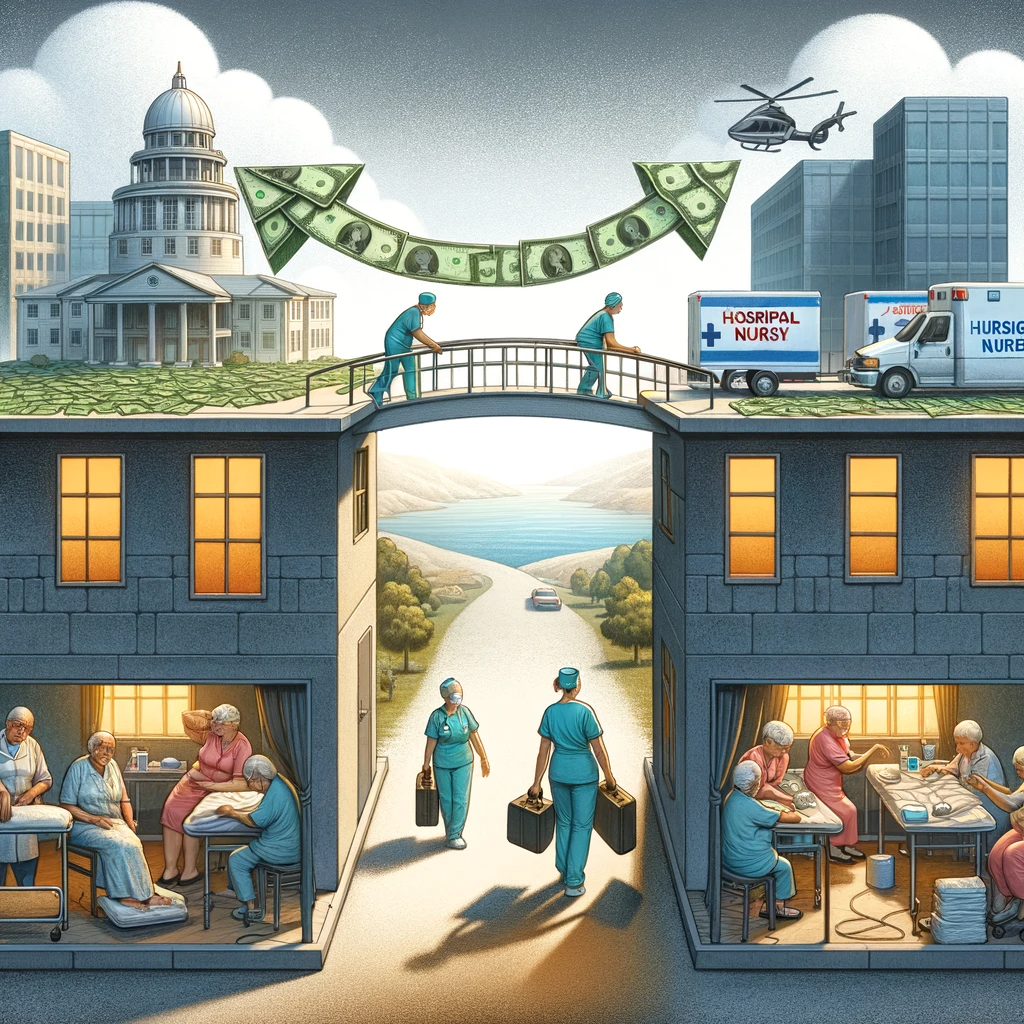
Nursing homes wanted to make hospitals happy. This was a source of income for the nursing homes. The hospital discharge planner would give the nursing home patients. The discharge planner at the hospital may have gotten a financial bonus. So, I saw skilled units in nursing homes take patients they were unable to handle. The result was, nursing homes had to use agency nurses with the skill level to provide that care. The average nursing home staff were unable to provide that level of care.
As the government policymakers reacted to the lack of coverage for skilled care, was to change the rules again. In an effort to continue to cut health care costs, Medicare Advantage programs were introduced. And government policy makers are now resorting to rationing care. The reimbursement rate for Medicare, Medicaid and and now Obamacare is so low the result is hospitals are closing. Older doctors are retiring early. Government involvement in our health care has not resulted in lowering health care costs. Instead is has resulted in the growth of a billion dollar insurance industry of gatekeepers. In the FAQ section of this post, I address the reason why 31 million Americans have insurance and don't use it.
Over the past 40 years, our health care has deteriorated. We have become accustomed to getting preauthorizations for care recommended treatments, procedures and even medications for care. Doctors are no longer in charge of our care. Government policymakers are. The high copays, deductibles and out of pocket expenses are meant to discourage use of benefits. And it does. We have seniors and those on disability that are unable to afford the therapy recommended by their doctors. Many are unable to purchase life saving medications. This is not a new problem. This has been going in for decades. Long ignored by government policy makers and elected leaders. The wealthy lobbying groups have far more influence and money that seems wins out over the needs of our own citizens.
I know you are asking, what does this have to do with the National Caregiver Support Program ? Please let me explain. I want to explain what address the key aspects of the National Family Caregiver Support Program. I wanted to provide a background for how the government functions with our health care.
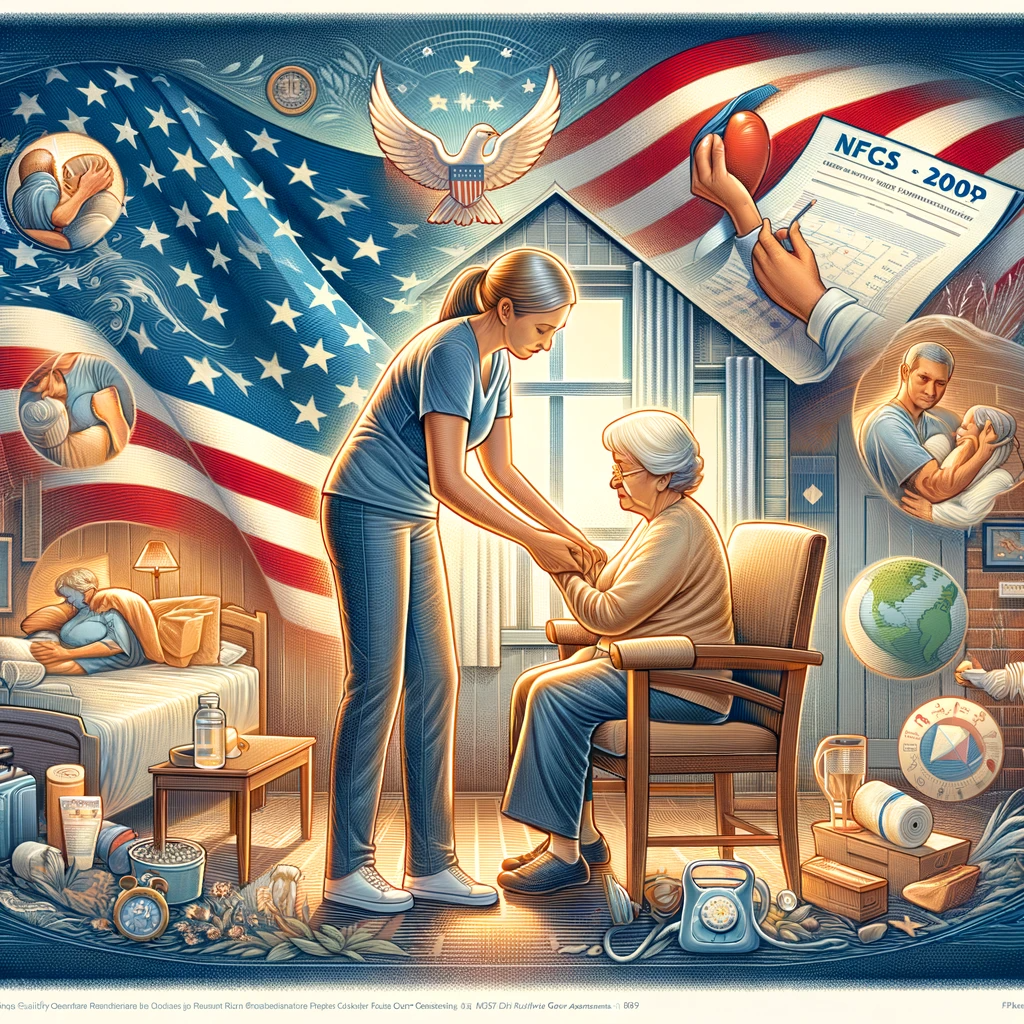
Understanding the National Family Caregiver Support Program (NFCSP): Key Aspects and Impact
Overview
The National Family Caregiver Support Program (NFCSP) plays a vital role in the healthcare landscape of the United States. Established in 2000 under Section 371 of the Older Americans Act of 1965 (as amended, Title IIIE), this program provides essential support to family and informal caregivers, aiding them in caring for older adults within their homes.
Purpose and Functioning
NFCSP allocates grants to states and territories based on the proportion of the population aged 70 and over. This funding supports various services that collectively enable caregivers to provide prolonged home care to their loved ones.
Services Provided
NFCSP grantees offer five core types of services:
- Information: Educating caregivers about available services.
- Access Assistance: Helping caregivers to avail of these services.
- Support and Training: Providing individual counseling, support groups, and caregiver training.
- Respite Care: Offering temporary relief to caregivers.
- Supplemental Services: Providing additional assistance on a limited basis.
These services are designed to complement other state and community-based supports, creating a coordinated care system. Studies have highlighted the effectiveness of these services in reducing caregiver stress, depression, anxiety, and in delaying the need for more costly institutional care.
Eligibility
The NFCSP extends its services to various caregiver groups, as redefined by the 2016 Reauthorization of the Older Americans Act:
- Adult caregivers (18+) for individuals aged 60+.
- Caregivers for individuals of any age with Alzheimer’s or related disorders.
- Older relatives (55+), excluding parents, caring for children under 18.
- Older relatives, including parents (55+), caring for adults aged 18-59 with disabilities.
Unique Needs and Variability
Caregiver needs and preferences for specific programs and services can vary significantly. The NFCSP acknowledges this diversity and tailors its offerings accordingly. The availability of these programs and services also varies across different states and communities.
Support and Innovation
A range of national organizations and programs support the development and innovation of caregiver support services. These resources offer research, technical assistance, and other forms of support.
Funding
The NFCSP has received consistent funding over the years, with a notable increase in 2016:
- FY 2013-2015: $145,586,000 annually.
- FY 2016: $150,586,000.
The National Family Caregiver Support Program stands as a testament to the recognition of family caregivers' pivotal role in the U.S. long-term care system. By providing comprehensive support, the NFCSP not only aids caregivers but also indirectly benefits those they care for, embodying a holistic approach to family-centric healthcare.
Well, the first thing I note is there is no way the funds allotted for these programs is even close to what is needed.
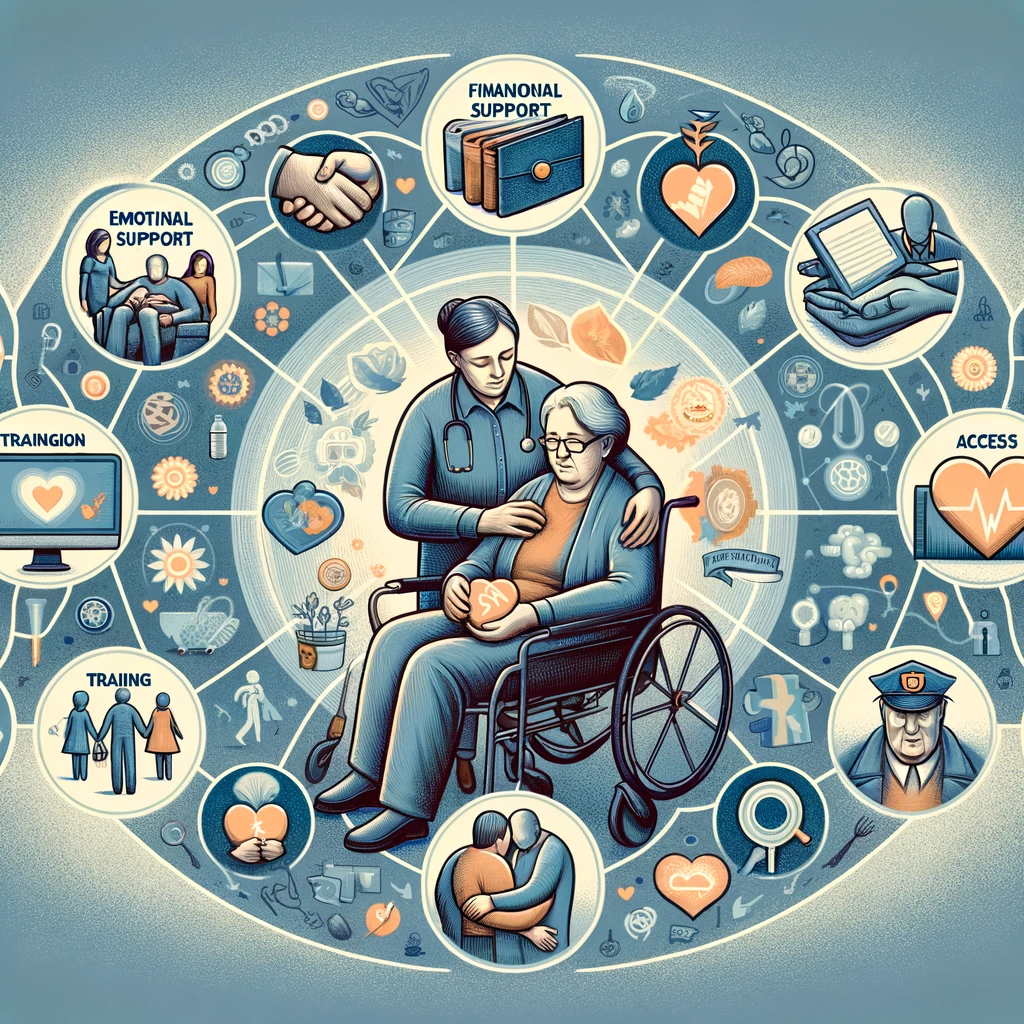
Addressing the Needs of Family Caregivers: Evaluating the National Family Caregiver Support Program (NFCSP)
The Needs of Family Caregivers
Family caregivers are an integral part of the healthcare system, often providing essential care without formal training or adequate support. Their needs are multifaceted and include:
Information and Training: Many caregivers lack essential information and training for complex caregiving tasks.
Respite Care: The physical and emotional toll of caregiving necessitates regular breaks, which are often hard to come by. The average caregiving journey is 6 to 8 years. Some provide care for over 20 years or longer. At the present time, there is no affordable respite care.
Financial Support: Caregiving can be a financial burden, with many caregivers experiencing lost income and increased expenses. One in six family caregivers leave their jobs to provide care to a loved one. Negatively impacting the financial and physical well being of the family caregiver.
Emotional and Social Support: Caregivers often face isolation and emotional stress, needing more robust emotional and social support networks.
Access to Healthcare Services: Caregivers need easy access to healthcare services for their care recipients.
Legal and Advocacy Support: Navigating legal and healthcare systems can be challenging, requiring specialized support.
How NFCSP Falls Short
While the NFCSP has made strides in supporting caregivers, there are areas where it falls short of meeting all their needs:
Limited Scope of Services: The NFCSP focuses on five core services, which may not cover all aspects of caregivers' needs, especially in terms of financial and legal support.
Inadequate Funding: The funding, although significant, may not be sufficient to cover the growing caregiver population and the expanding range of their needs. Caregivers are struggling financially, physically and emotionally. Even our disease specific organizations ignore the needs of the family caregiver for respite care. While these organizations raise billions of dollars for a cure, they are ignoring the needs of the caregiver and the new disease of the family caregivers. The chronic stress, the lack of respite care availability is causing 63% of family caregivers are becoming seriously ill or dying before the person they are caring for passes.
It is estimated that family caregivers provide over $650 billion dollars in unpaid care. So, you see, the present budget does not come close to providing the level of financial support for respite care services needed.
Variability Across States: The quality and availability of services vary greatly across different states and territories, leading to unequal access to support.
Lack of Personalized Support: Caregivers have unique situations and needs, but NFCSP services may not be sufficiently tailored to individual circumstances. The suicide rate of elderly spousal caregivers is 4 times the national average. This is going unnoticed. The suicidal thoughts of unpaid caregivers is up 31%.
Underrepresentation of Certain Groups: Some caregiver groups, especially those caring for individuals with specific conditions or disabilities, may not find adequate resources tailored to their specific challenges.
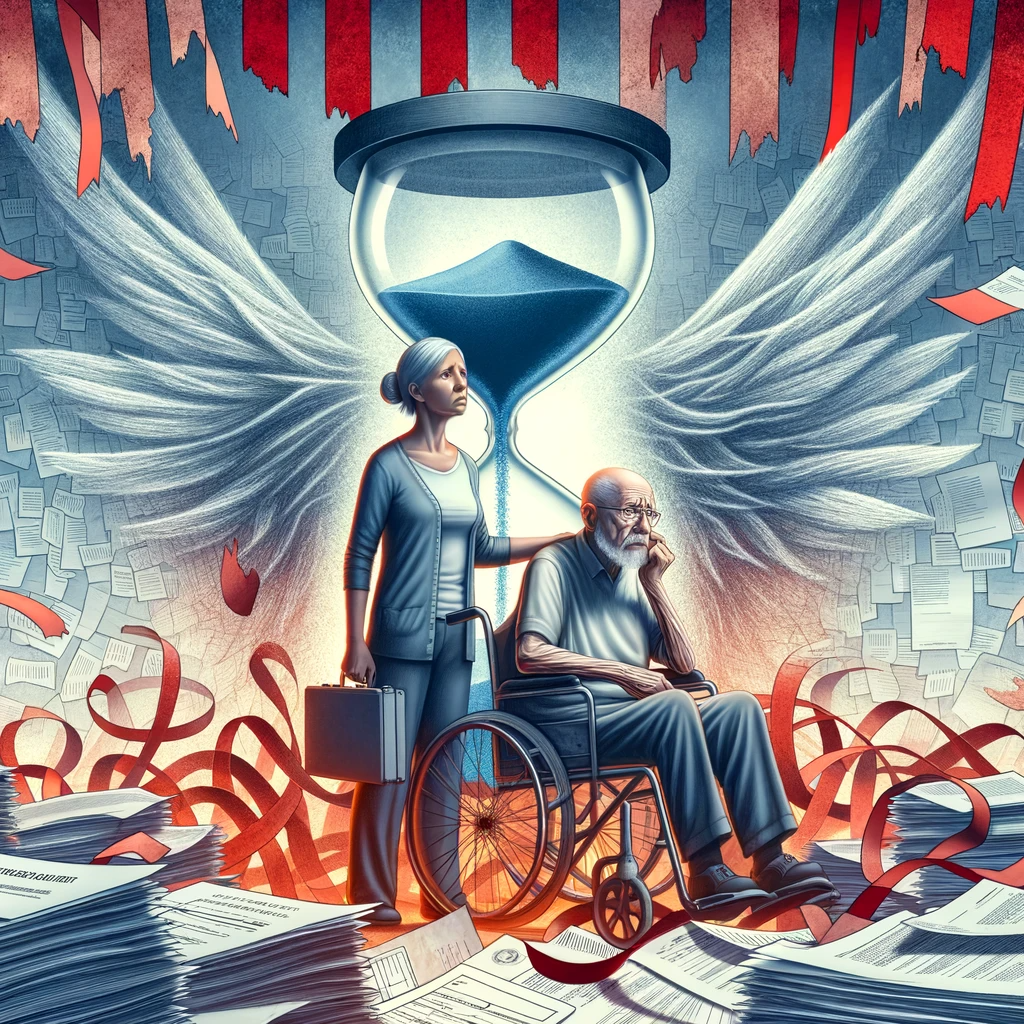
Insufficient Respite Care: Despite being a service under NFCSP, respite care is often reported as insufficient in terms of availability and duration.Here is a pdf of the government funded respite care. Even the government run VA programs take as long as two years before they get approval for funds to provide care. The government rules and regulations require you to jump through so many hoops. It causes discouragement and a sense of hopelessness waiting for much needed aid to pay for care. I cannot tell you how many veterans pass before the support was approved. Several of my clients had their paperwork lost, required documentation lost which further delayed approval.
There is so much need for respite care, the Alzheimer's Association alone has limited funds. They require an application. In the application, the caregivers to are informed this is a competitive application process for individuals in need for respite care. They run out of funds very early in the year. They raise billions, I mean billions for looking for a cure. They ignore the needs of the family caregiver.
Limited Awareness and Utilization: Many caregivers are unaware of the NFCSP or how to access its services, leading to underutilization.
The National Family Caregiver Support Program, while a valuable resource, needs enhancement to fully address the diverse and growing needs of family caregivers. Improvements in funding, service scope, personalization, and awareness could significantly bolster its effectiveness. Recognizing and addressing these gaps is crucial for supporting the unsung heroes in our healthcare system — the family caregivers.
This is why I have created a petition for the family caregivers and direct care workers

Here's what I believe we need.
That we encourage the creation of volunteer “CareTeam Partners” to provide non-medical practical assistance and companionship to the elderly, at no public expense. There needs to be a national movement that promotes volunteerism and tax incentives for not only those that participate, but the organizations that develop and assist caregivers to utilize a care team partner support group.
That we support financial support directly to the family caregiver, as they are the largest unpaid pillar of the long-term care segment. Resources are desperately needed to alleviate financial hardship and to promote retirement security of those providing care.Many end up at or below poverty level. Some end up homeless.
Federal support of family caregivers is urgently needed. Expanded, targeted federal funding must be directed to organizations providing education and access to regular respite care.
As most family caregivers try to maintain careers and are often forced to choose between providing care and working for a living, more flexible and supportive employment policies should be incentivized to encourage employers to support the family caregiver.
Establishment of cooperative communities that enable the care of the aging along with other individuals in need of custodial and medical care would be an innovative approach that brings opportunities to optimize socialization in residential settings. These communities could also offer free government respite for providing care for their loved ones. Provide regular federally funded ongoing respite services to ease the burden on the family caregiver.
That recognition of the direct care worker as an essential member of the long-term support service system is urgently needed. Improving the quality of direct care jobs by supporting a competitive wage, on going training for career development, advancement and acknowledgement of certifications earned and maintained by these workers.
After dealing with government policies and the paperwork and rules and regulations, I am hopeful that a private organization will take on a few of these tasks. Government never moves fast. While the politicians have made promises to address the issues of family caregivers, not one has kept that promise. They take advantage of the lack of unity of the family caregiver. I find that the government creates studies, then more studies. Recommendations are made and usually are never implemented.

When We Speak with One Voice, Caregivers Will be Heard!
Whether you work full-time, part-time or your sole job is that of family caregiver, the demands are very often overwhelming. You feel pulled in so many directions and yet, it seems there are no viable resources available to help.
Some of the most pressing issues family caregivers currently face:
- Mounting medical bills such that are not covered by insurance or Medicare
- Transportation issues, whether the need for a specially equipped vehicle or someone to help with driving to and from appointments
- The need for private nurses—both the cost and availability of skilled healthcare workers can be prohibitive
- Lack of any downtime; the exhaustion and emotional strain of the role requires help, help that family caregivers are just not getting
There really is no outlet, no channel, no platform where family caregivers can turn to find those resources needed to keep them going. And with senior populations expected to reach record numbers in the next four years, the situation is only going to get worse.
Please sign and share out CareGiver Relief Family Caregiver and Direct Care workers
Frequently asked Questions
Can you explain the DRG Payment System in Healthcare?
Introduction to DRG
Diagnosis-Related Group (DRG) is a system used by Medicare and some private health insurers to determine hospital payments for inpatient stays. DRGs categorize hospitalizations based on the patient's diagnosis and treatment.
How DRGs Work
- Assignment: Upon discharge, a hospital assigns a DRG based on the patient's diagnosis and treatment, using ICD-11 or ICD-10 codes.
- Fixed Payment: The hospital receives a fixed amount for that DRG, irrespective of the actual cost incurred during treatment.
Financial Implications
- Profit or Loss: If the hospital's cost is less than the DRG payment, it profits. If the cost is more, it incurs a loss.
- MS-DRG System: Medicare uses the Medicare Severity Diagnosis-Related Group (MS-DRG) for payments under the inpatient prospective payment system (IPPS).
Purpose of DRGs
- DRGs aim to ensure that Medicare payments reflect the hospital’s case mix, i.e., the types of patients treated and the severity of their medical issues.
- During the COVID-19 pandemic, additional codes and a 20% MS-DRG add-on payment were introduced for COVID-19 patients.
Expansion and Innovations
- Outpatient Surgeries: Following the 21st Century Cures Act, some DRGs now apply to outpatient surgeries.
- New Payment Systems: Medicare and private insurers are exploring bundled payments, combining inpatient and outpatient services into one package.
Calculating Hospital Payments
- Base Payment Rate: Each hospital has a base payment rate.
- Relative Weight: Each DRG is assigned a relative weight, reflecting the resources needed for that patient category.
Financial Trends and Challenges
- Medicare Adjustments: Changes in base payment rates due to improved coding practices have led to financial debates.
- Rural Hospitals: Rural hospitals face increased financial struggles and closures.
- Nonprofit Hospitals: Large nonprofit hospitals have seen significant investment income.
- Net Operating Income: Varied financial outcomes have been observed across hospitals during recent years.
Summary
The DRG payment system categorizes hospital stays into groups based on diagnoses and treatments. Hospitals are paid a fixed amount per DRG, which can lead to profits or losses depending on the actual treatment costs. The system is designed to streamline Medicare payments and has been expanded and adapted over the years, facing various financial challenges and adjustments.
Are Hospitals Making or Losing Money?
After the MS-DRG system was implemented in 2008, Medicare determined that hospitals' based payment rates had increased by 5.4% as a result of improved coding (i.e., not as a result of anything having to do with the severity of patients' medical issues).
So Medicare reduced the base payments rates to account for this. But hospital groups contend that the increase due to improved coding was actually only 3.5% and that their base rates had been reduced by too much, resulting in $41.3 billion in lost revenue from 2013 to 2028.9
Hospitals in rural areas are increasingly struggling, with hospital closures in rural areas becoming more common in recent years.10 There are also indications that even well-established, heavily trafficked hospitals are losing money in some areas, but that's due in part to an overabundance of high-priced technology, replicated in multiple hospitals in the same geographic location, and hospital spending on facility and infrastructure expansions.11
The largest nonprofit hospitals, however, earned $21 billion in investment income in 2017,12 and some big hospital systems continued to profit throughout the COVID pandemic.13 Indeed, about three-quarters of hospitals had a positive net operating income in 2020/2021.3 But other hospitals have seen reductions in their profit margins.14
The challenge is how to ensure that some hospitals aren't operating in the red under the same payment systems that put other hospitals well into the profitable realm. That's a complex task, though, involving more than just DRG-based payment systems, and it promises to continue to be a challenge for the foreseeable future.
When a patient with Medicare (or many types of private insurance) is hospitalized, a diagnostic related category (DRG) code is assigned based on the patient's condition. There are numerous factors that go into determining the DRG for each patient, and each DRG has a different relative weight, depending on the resources that are generally needed to provide care for someone with that DRG.
Each hospital also has a blended base rate, which is based on a variety of factors, including location, patient demographics, whether it's a teaching hospital, etc. The relative weight of the DRG is multiplied by the hospital's base rate to determine how much the hospital will be paid for that patient.
Can you explain how the low reimbursement of Medicare, Medicaid and Obamacare has impacted our health care system?
Examining the Impact of Low Medicare and Medicaid Reimbursements on Healthcare
Negative Impact on Hospitals and Healthcare Services
Low Medicare and Medicaid reimbursements have significant consequences for the healthcare system, particularly affecting hospitals, teaching institutions, and the availability of medical professionals.
1. Hospital Closures
- Rural and Community Hospitals: Low reimbursement rates are a critical factor in the financial strain faced by rural and smaller community hospitals. Insufficient funding leads to reduced services or outright closures.
- Impact on Access: Hospital closures result in reduced access to healthcare, particularly in underserved or rural areas, leading to longer travel times for patients and increased strain on remaining facilities.
2. Shortage of Teaching Hospitals
- Financial Strain: Teaching hospitals, which play a vital role in training new healthcare professionals, face financial challenges due to low reimbursements. This impacts their ability to maintain operations and educational programs.
- Reduced Training Capacity: As a result, there's a potential reduction in the number of trained healthcare professionals entering the workforce.
3. Shortage of Doctors and Specialists
- Lower Incentives to Enter Certain Specialties: The gap in reimbursement rates can discourage medical graduates from entering less lucrative specialties, exacerbating existing shortages.
- Geographical Imbalance: Areas with lower reimbursement rates may struggle to attract and retain medical professionals, leading to geographical disparities in healthcare access.
Broader Implications
- Quality of Care: Financial pressures can lead to reduced quality of care, as hospitals and clinics might cut corners to manage costs.
- Increased Healthcare Costs: In the long term, inadequate access to care and preventative services can lead to higher overall healthcare costs due to the increased need for emergency services and advanced treatments for conditions that could have been managed or prevented.
- Economic and Social Impact: Hospital closures and healthcare shortages can have a broader economic and social impact on communities, affecting employment, local economies, and overall public health.
The issue of low Medicare and Medicaid reimbursements is multifaceted, impacting not just the financial stability of healthcare institutions but also the broader healthcare landscape. Addressing these challenges requires a comprehensive approach that considers the financial realities of healthcare providers and the essential need for accessible, high-quality medical care across all communities.
Can you explain why people with insurance do not use their benefits?
Challenges of Underinsurance in the US Since the Affordable Care Act
Background: Since the Affordable Care Act's implementation in 2010, Americans are required to have health care coverage, either through the insurance marketplace or employer-provided plans.
The Issue of Underinsurance
Definition: Underinsurance affects 31 million Americans who, despite having health insurance, struggle to afford basic healthcare. This is often due to high deductibles in their plans.
High Deductibles: These require paying a significant amount out-of-pocket before insurance coverage starts, posing a challenge, especially for low-income individuals.
Impact on Lower Income Individuals
Income vs. Deductibles: For those with low incomes, high deductibles make accessing healthcare almost impossible.
Trade-off in Plans: Plans with low deductibles often have higher monthly premiums, presenting another financial challenge.
Solutions and Strategies
Health Insurance Subsidy: Low-income earners might qualify for a subsidy on the health insurance marketplace, making plans with lower deductibles more affordable.
Health Savings Accounts (HSA) or Flexible Spending Accounts: Contributions to these accounts are tax-advantaged, reducing the burden of healthcare costs.
Exemptions from Healthcare Mandate: Depending on income and family size, some may qualify for an exemption from the insurance mandate.
Researching Plans: Investigating different plans can help find one that better suits individual needs and lifestyles.
Co-pay Considerations: Choosing a plan with lower deductibles but higher co-pay might be more manageable, especially for those who infrequently visit the doctor.
Drug Formulary: Opting for a plan with a more limited drug formulary can lead to lower deductibles and co-pays, offering a more affordable monthly premium.
The issue of underinsurance highlights a significant gap in healthcare affordability in the United States, especially among low-income populations. Exploring various strategies and understanding the nuances of different insurance plans are essential steps in mitigating the challenges posed by high deductibles and other cost-related barriers.
You might also like this article:
